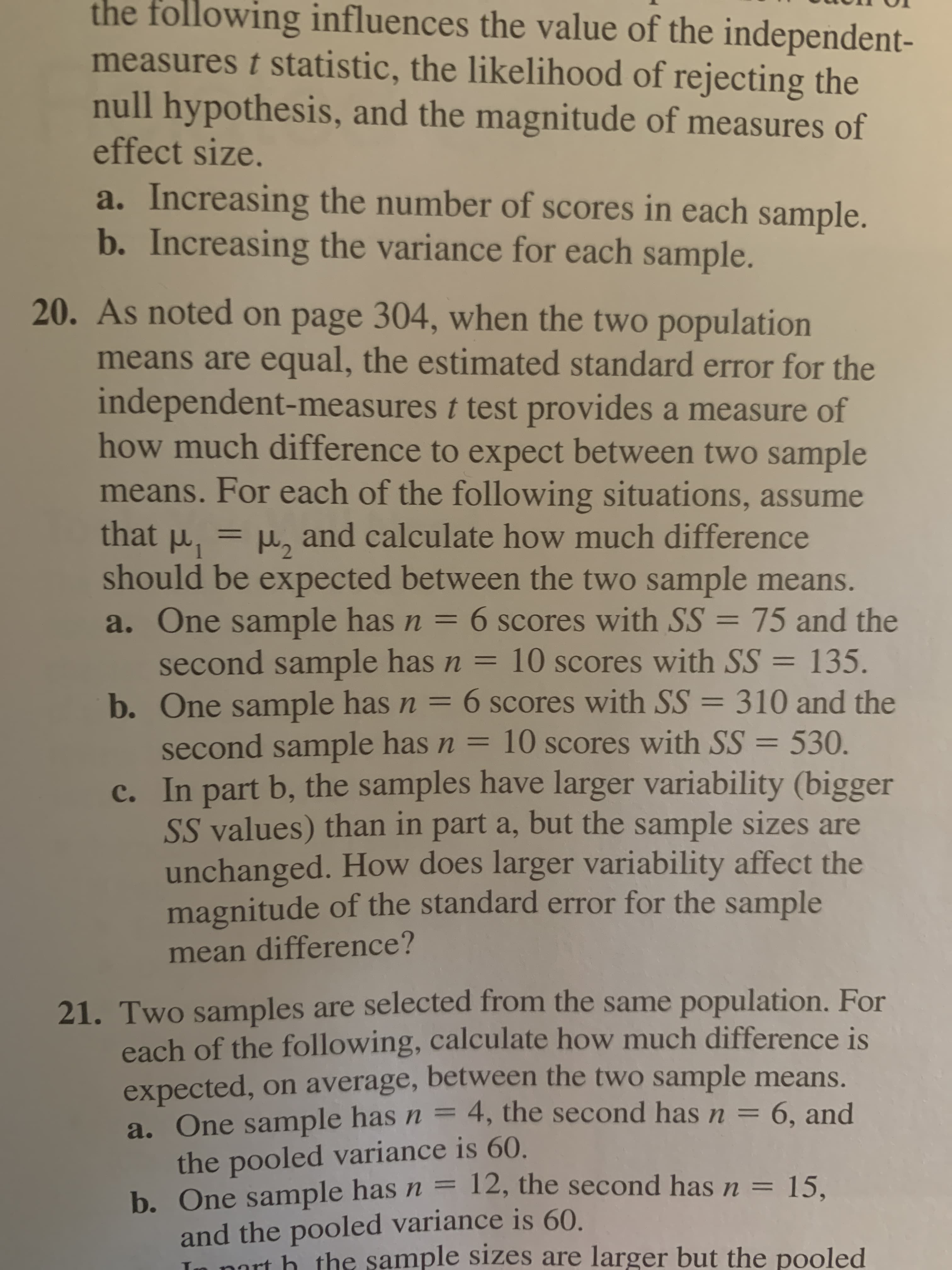the following influences the value of the independent- measures t statistic, the likelihood of rejecting the null hypothesis, and the magnitude of measures of effect size. a. Increasing the number of scores in each sample. b. Increasing the variance for each sample. 20. As noted on page 304, when the two population means are equal, the estimated standard error for the independent-measures t test provides a measure of how much difference to expect between two sample means. For each of the following situations, assume should be expected between the two sample means. that P a. One sample has n = 6 scores with SS = 75 and the second sample has n = 10 scores with SS = 135. b. One sample has n = 6 scores with SS = 310 and the second sample has n = 10 scores with SS = 530. c. In part b, the samples have larger variability (bigger SS values) than in part a, but the sample sizes are unchanged. How does larger variability affect the magnitude of the standard error for the sample and calculate how much difference %3D %3D %3D %3D %3D %3D %3D %3D mean difference? 21. Two samples are selected from the same population. For each of the following, calculate how much difference is expected, on average, between the two sample means. a. One sample has n = 4, the second has n = 6, and the pooled variance is 60. b. One sample has n = 12, the second has n = 15. and the pooled variance is 60. In port h the sample sizes are larger but the pooled %3D %3D %3D
Addition Rule of Probability
It simply refers to the likelihood of an event taking place whenever the occurrence of an event is uncertain. The probability of a single event can be calculated by dividing the number of successful trials of that event by the total number of trials.
Expected Value
When a large number of trials are performed for any random variable ‘X’, the predicted result is most likely the mean of all the outcomes for the random variable and it is known as expected value also known as expectation. The expected value, also known as the expectation, is denoted by: E(X).
Probability Distributions
Understanding probability is necessary to know the probability distributions. In statistics, probability is how the uncertainty of an event is measured. This event can be anything. The most common examples include tossing a coin, rolling a die, or choosing a card. Each of these events has multiple possibilities. Every such possibility is measured with the help of probability. To be more precise, the probability is used for calculating the occurrence of events that may or may not happen. Probability does not give sure results. Unless the probability of any event is 1, the different outcomes may or may not happen in real life, regardless of how less or how more their probability is.
Basic Probability
The simple definition of probability it is a chance of the occurrence of an event. It is defined in numerical form and the probability value is between 0 to 1. The probability value 0 indicates that there is no chance of that event occurring and the probability value 1 indicates that the event will occur. Sum of the probability value must be 1. The probability value is never a negative number. If it happens, then recheck the calculation.
Question 20

Trending now
This is a popular solution!
Step by step
Solved in 4 steps with 3 images


